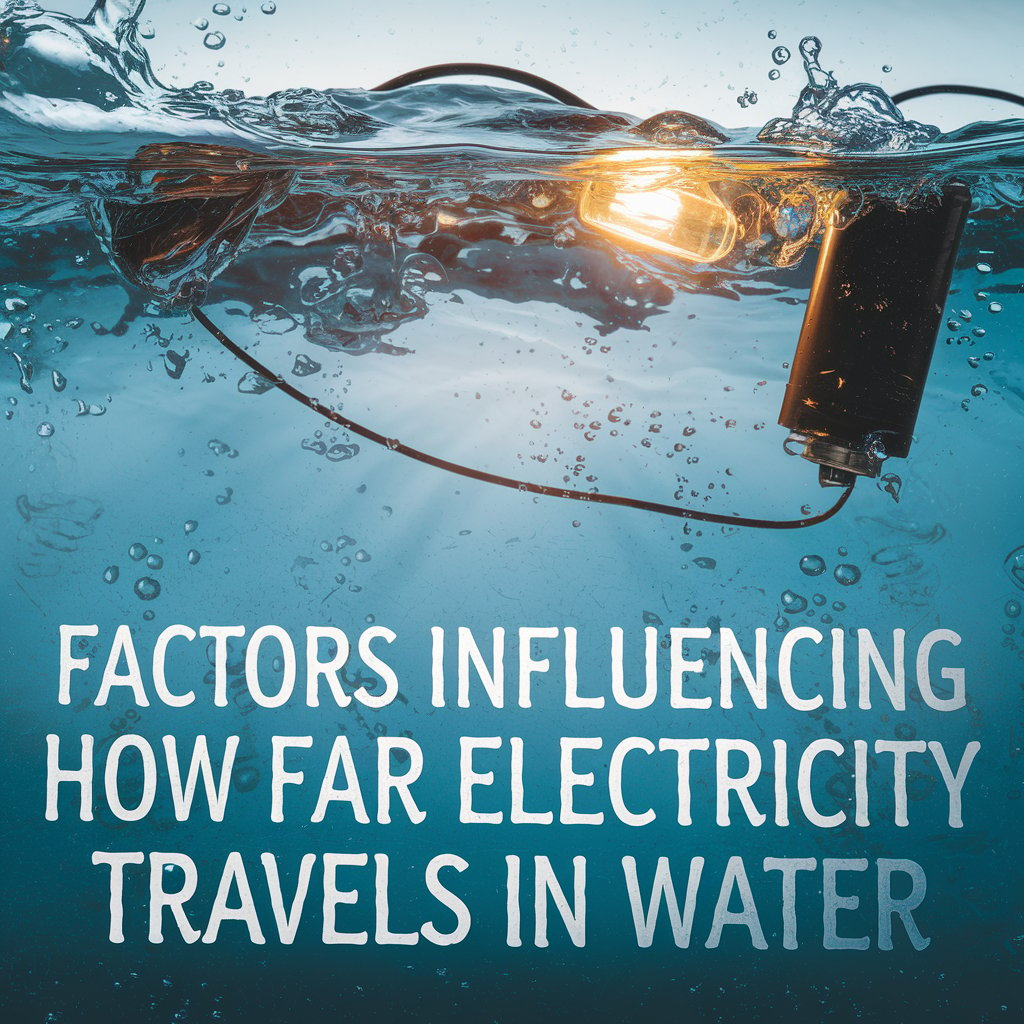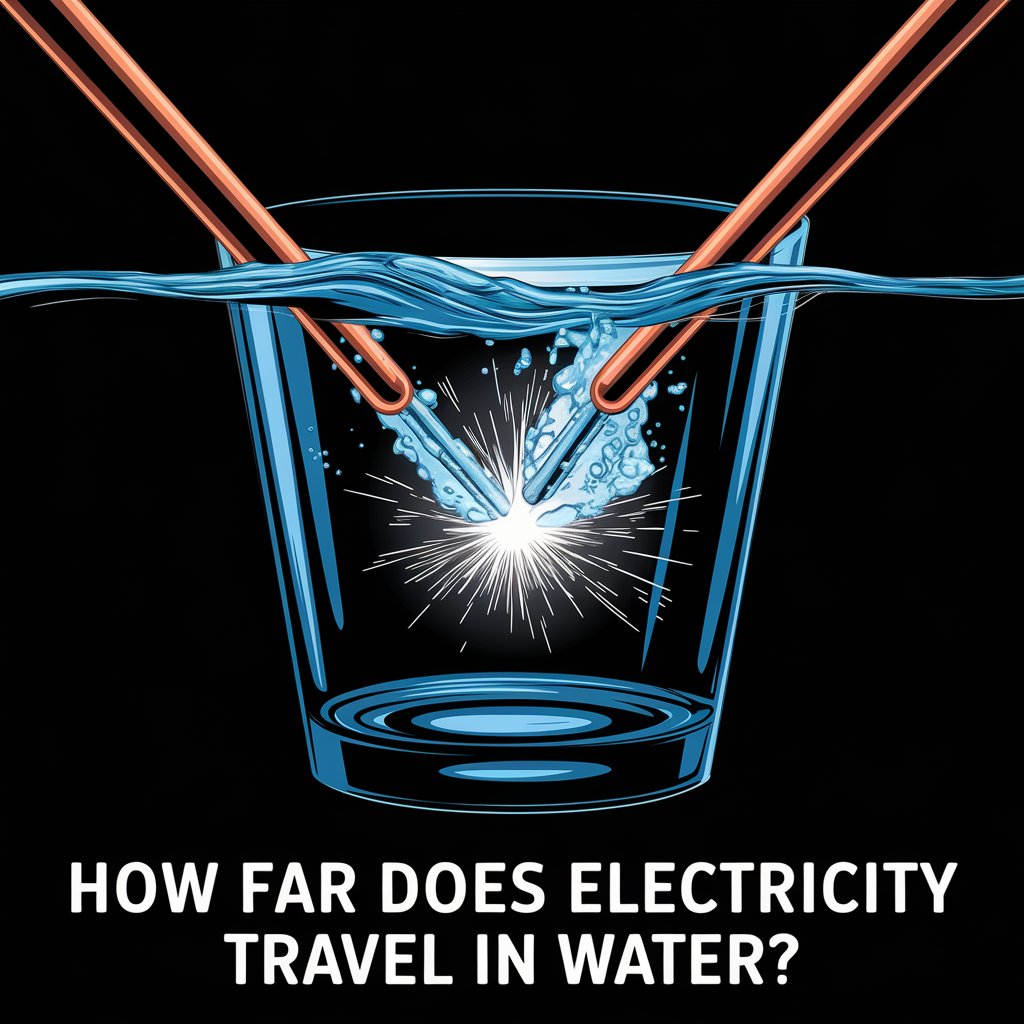Electricity is an invisible force that powers our modern world. However, its behavior in water raises fascinating questions about safety, physics, and the natural environment. How far does electricity travel in water? This query dives deep into the realm of science and practicality, revealing a captivating story that intertwines physical properties, environmental conditions, and engineering marvels. In this article, we will explore the fascinating relationship between electricity and water, examining factors that influence its travel, real-world applications, and the implications for safety and technology.
Understanding Electricity and Water: A Basic Overview
What Is Electricity?
Electricity is the flow of electrons through a conductor, often described as electric current. It travels through materials that allow the movement of electrons, like metals. Conductors and insulators play crucial roles in controlling how electricity behaves.
Is Water a Conductor of Electricity?
Water itself, in its purest form (distilled water), is a poor conductor of electricity. However, most natural water contains dissolved salts, minerals, and impurities, which turn it into a conductor. These dissolved ions enable electric currents to pass through water, making it a complex medium for electricity.
Factors Influencing How Far Electricity Travels in Water

1. Water Composition
The conductivity of water largely depends on its composition. Salty water, such as seawater, contains high concentrations of ions, making it an excellent conductor. Freshwater, on the other hand, has fewer dissolved minerals and thus conducts electricity less effectively.
2. Voltage of the Electric Source
Higher voltages result in more extended ranges of electric currents in water. For example, a high-voltage electric discharge, like lightning, can travel much farther in water compared to a low-voltage household appliance.
3. Temperature of Water
Temperature significantly affects water’s conductivity. As the temperature rises, water molecules move more freely, facilitating better conductivity. This property means that electricity may travel farther in warm water compared to cold water.
4. Presence of Obstacles
Obstacles such as rocks, aquatic vegetation, and debris in the water can disrupt the flow of electricity. These objects act as barriers, limiting the range of current travel.
5. Type of Electric Current
Alternating Current (AC) and Direct Current (DC) behave differently in water. AC tends to dissipate more quickly due to its oscillating nature, while DC can maintain a steadier flow over a more extended distance.
Real-Life Scenarios: How Electricity Behaves in Water
1. Lightning Strikes
Lightning, a natural high-voltage electric discharge, can travel significant distances in water. When lightning strikes a body of water, the electric current spreads outward, primarily staying on the surface due to water’s conductive properties.
2. Electric Shock in Pools
In swimming pools, faulty electrical systems or exposed wires can lead to electric shocks. The range of electricity in such controlled environments is generally limited to a few feet, depending on water quality and voltage.
3. Submarine and Underwater Cables
Submarine cables used for telecommunications and power transmission are designed to withstand and safely conduct electricity over vast distances underwater. Their insulation and design ensure minimal loss of energy.
Safety Implications: Avoiding Electric Hazards in Water
1. Understanding Shock Zones
The immediate area around an electric source in water is the most dangerous. Beyond a certain distance, the electric current weakens and poses less risk. Estimating this range requires understanding the water’s conductivity and the voltage of the source.
2. Dangers in Recreational Activities
Activities like swimming, boating, or fishing near docks with electrical systems can pose risks. Ensuring proper maintenance and installation of electrical systems can prevent accidents.
3. Safety Measures
- Ground Fault Circuit Interrupters (GFCIs): These devices shut off power when they detect current leakage, protecting against electric shocks in pools and wet areas.
- Routine Inspections: Regular checks of electrical systems near water are essential.
- Awareness Campaigns: Educating people about the risks and preventive measures ensures safer interactions with water bodies.
Scientific Studies and Experiments
1. Testing Conductivity
Experiments have demonstrated how varying levels of salinity, temperature, and voltage affect electricity’s travel distance in water. These tests provide valuable insights for industries and safety standards.
2. Understanding Electric Fish
Electric eels and similar species generate electricity in water for hunting or defense. Studying their behavior offers clues about how electricity interacts with aquatic environments.
3. Military and Research Applications
Research in underwater electricity includes using electromagnetic waves for communication and detecting submarines. These studies highlight the practical and strategic importance of understanding electricity’s behavior in water.
Environmental Impact
1. Impact on Aquatic Life
Electric currents in water can affect marine organisms. While some species adapt or even utilize electricity, sudden discharges, like lightning or underwater electric fields, can harm ecosystems.
2. Renewable Energy Projects
Hydroelectric power plants and offshore wind farms use water as a medium for electricity. Understanding electricity’s travel in water ensures efficiency and minimizes environmental disruption.
Advancements in Technology
1. Electrification of Marine Transportation
Electric propulsion systems for boats and submarines rely on insulated conductors to safely transmit electricity in water. These advancements promise eco-friendly solutions for maritime industries.
2. Wireless Underwater Communication
Innovative technologies enable the transmission of electromagnetic signals in water, expanding possibilities for underwater exploration and data collection.
3. Robotics in Aquatic Environments
Underwater robots equipped with electric systems are revolutionizing ocean research. Their design minimizes the risks of electric discharge, ensuring safe operation.
FAQs
What is the range of electricity in water?
The range depends on factors such as voltage, water composition, and temperature. In freshwater, the range is shorter compared to saltwater due to differences in conductivity.
How far does electricity travel in water from lightning?
Electricity from a lightning strike can travel several meters in water, primarily across the surface, as the current dissipates outward rapidly.
Can electricity travel through sea water?
Yes, seawater is an excellent conductor of electricity due to its high salt content. This allows electricity to travel farther compared to freshwater.
How far does electric need to be from water?
Electrical installations should typically be kept several feet away from water sources to prevent hazards, with specific distances determined by safety regulations.
Can you run electrical next to water?
Yes, but strict safety measures, such as using waterproof enclosures and GFCIs, are necessary to minimize risks.
How far can electricity travel?
Electricity’s travel distance depends on the conductor and medium. In water, it dissipates rapidly but can extend farther in saltwater compared to freshwater.
How close can you build next to a water main?
Building codes dictate safe distances from water mains to prevent damage and ensure accessibility. Local regulations vary, so consulting guidelines is essential.
Does water stay electrified?
Water does not remain electrified once the electric source is removed, as the current dissipates quickly in the conductive medium.
Myth Busting: Misconceptions About Electricity and Water
1. Electricity Instantly Electrocutes Everything in Water
While electricity is dangerous in water, its range is limited by factors like voltage and water composition. Not every electric source poses a widespread threat.
2. Saltwater Is the Perfect Conductor
Saltwater is an excellent conductor, but it is not perfect. Resistance still exists, and electricity dissipates as it travels.
3. Electricity Always Sinks
Electricity travels along the path of least resistance, which often means staying near the surface in water. This behavior is due to the skin effect and the distribution of ions.
Conclusion: A Balanced Perspective
How far does electricity travel in water? The answer is nuanced, influenced by numerous variables like voltage, water composition, and temperature. Understanding these factors is crucial for safety, technology, and environmental stewardship. From everyday scenarios like swimming pools to cutting-edge underwater technologies, the interplay between electricity and water continues to intrigue and inspire. Whether you’re a scientist, an engineer, or simply someone curious about the world, this knowledge empowers us to harness electricity responsibly and safely—even in the depths of our oceans.




